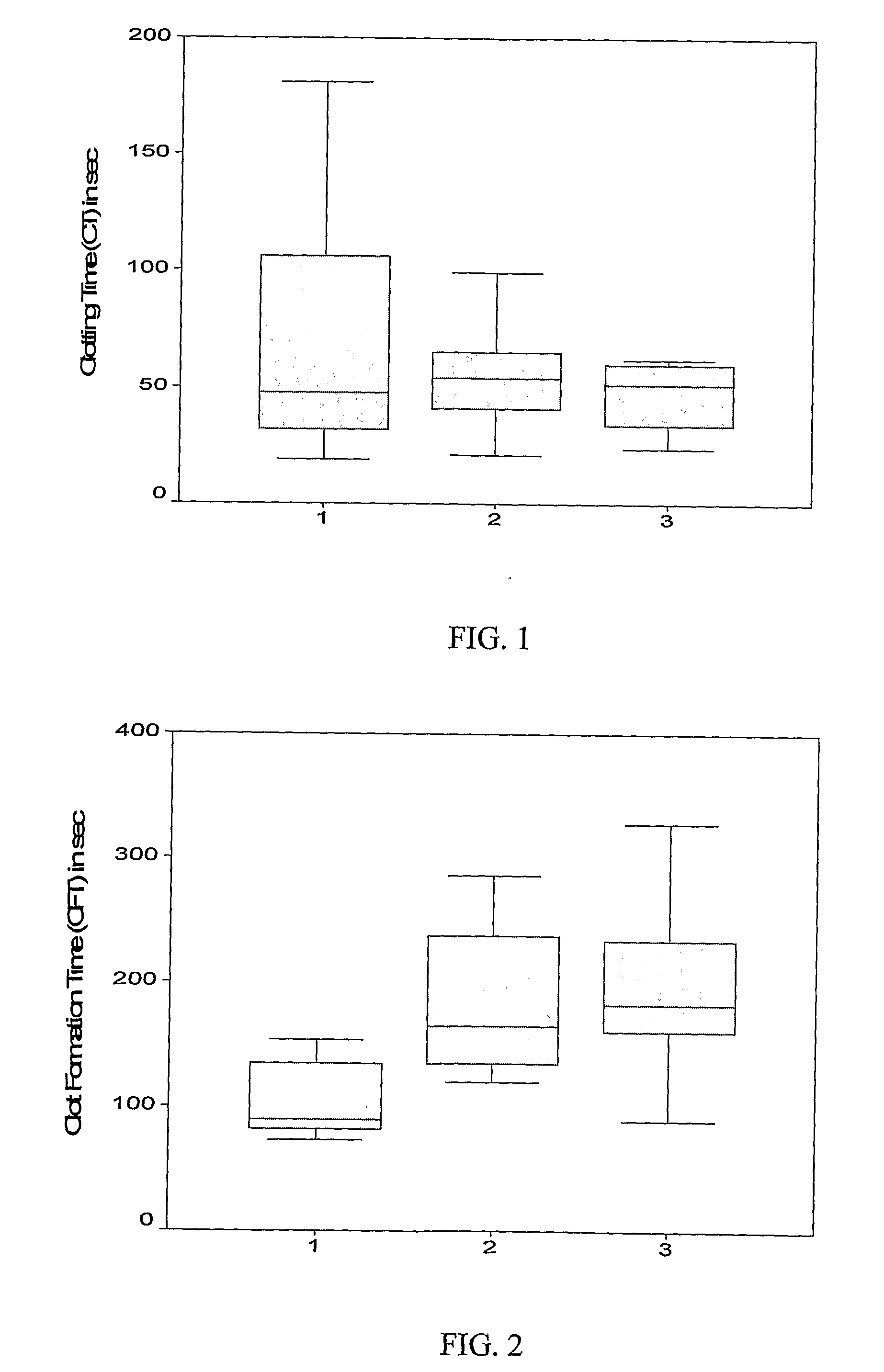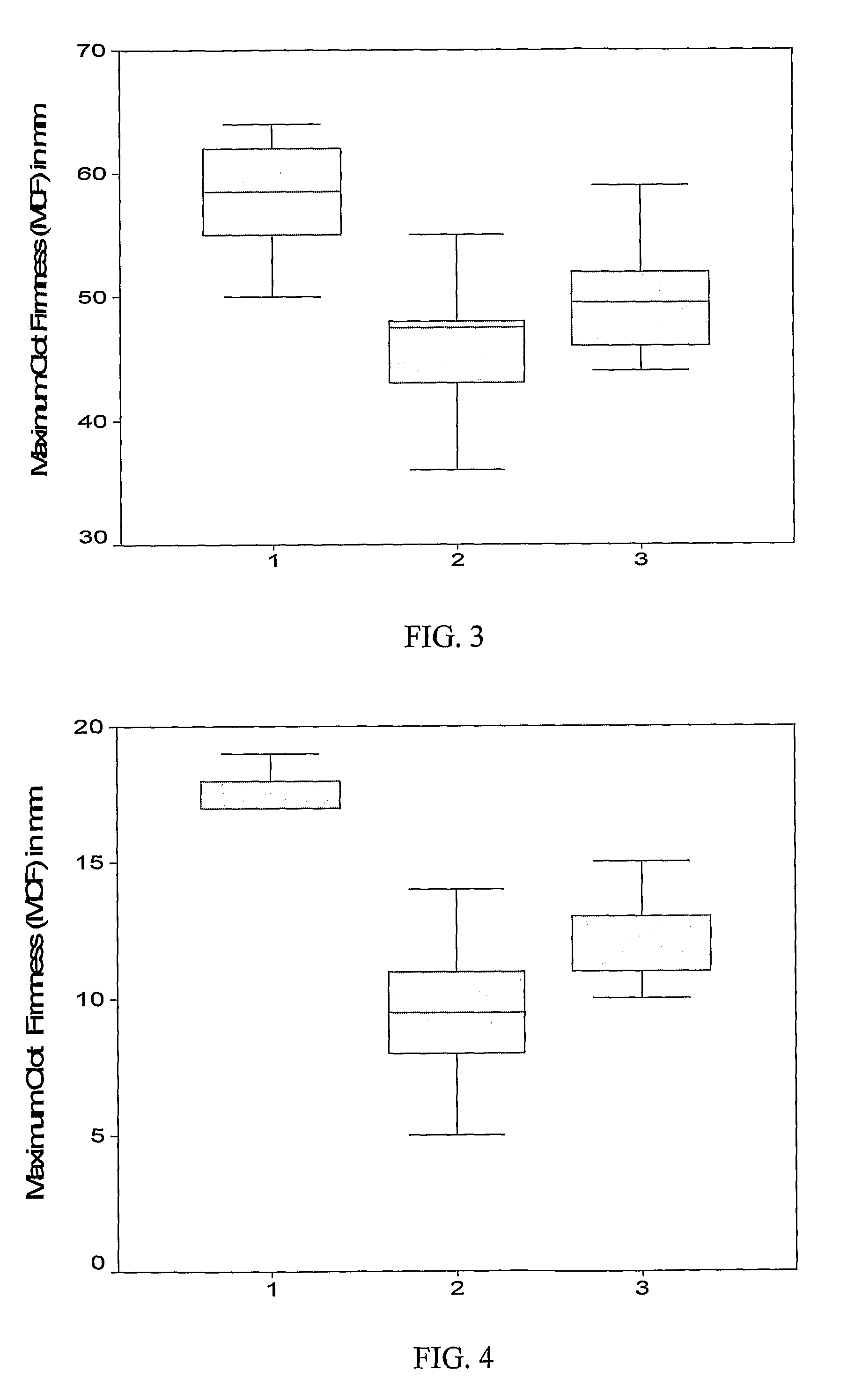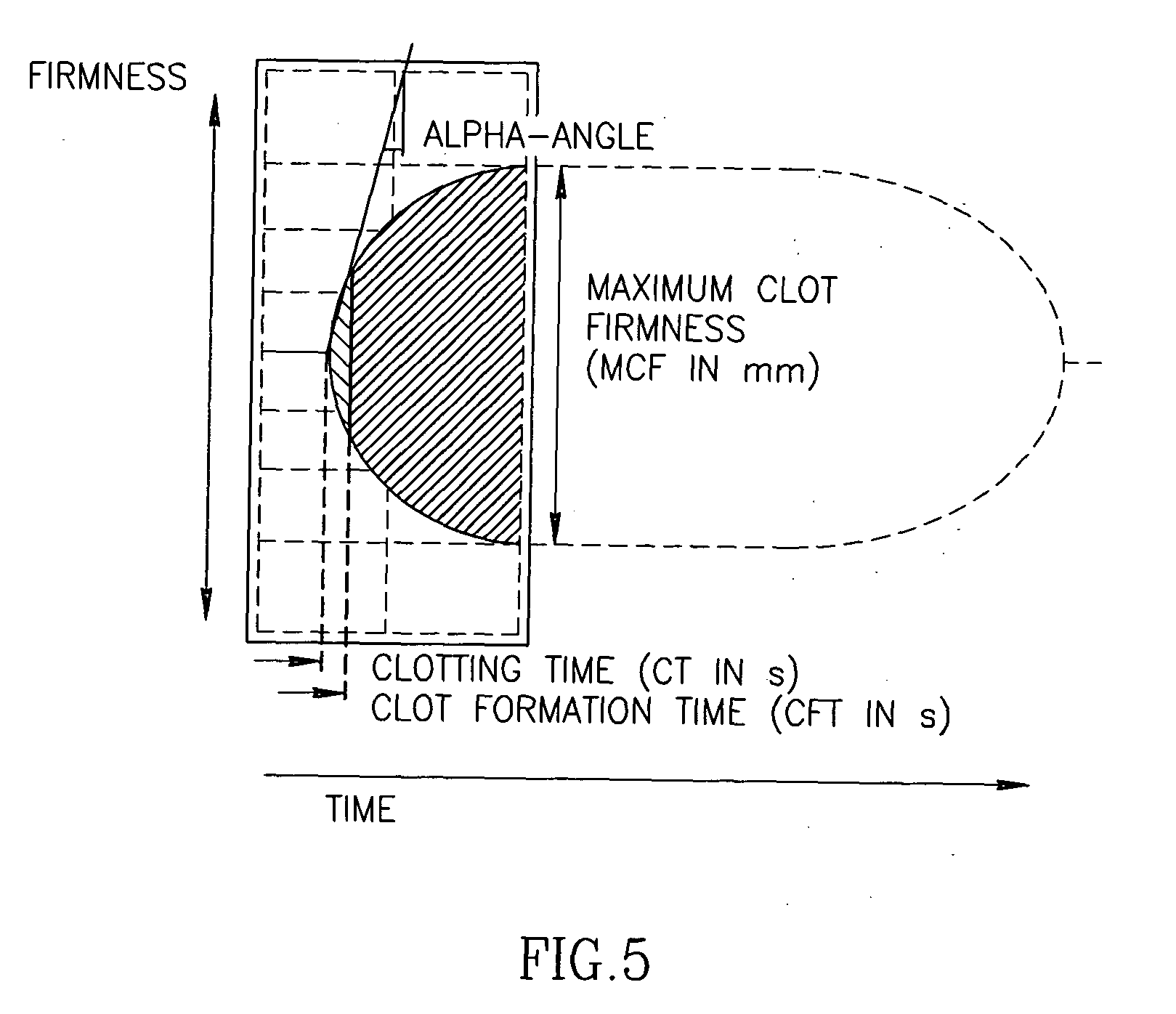Fibrinogen for treatment of bleeding in trauma and platelet disorders
a technology of fibrinogen and platelet disorder, which is applied in the field of fibrinogen, can solve the problems of uncontrollable bleeding sources, less available and convenient emergency use in the hospital, and unsuitable pre-hospital settings, so as to improve the hemostasis of exogenously added fibrinogen, save lives, and strengthen the clot
- Summary
- Abstract
- Description
- Claims
- Application Information
AI Technical Summary
Benefits of technology
Problems solved by technology
Method used
Image
Examples
example 1
External Bleeding in Pre-Hospital Settings
[0084]An individual suffers from multiple external injuries as a result of a car accident, terrorist attack or any other trauma. As the individual cannot be immediately transported to a hospital the physician or paramedic attempts to minimize bleeding in order to maximize the chances of bringing the individual to a hospital alive. Initial treatment includes tourniquets and haemostatic bandages to slow the bleeding. The individual does not experience sufficient decrease in bleeding and fibrinogen is prepared for injection. Three grams of lyophilized fibrinogen are dissolved in 30 ml of saline and shaken until fibrinogen is fully dissolved. The solution is injected intravenously so that fibrinogen can circulate to sites of injury. The individual is reassessed for bleeding following 30 minutes observation, and if bleeding has not decreased to a controllable level, then a second injectable fibrinogen solution is administered. Alternatively, a li...
example 2
Internal Bleeding in Pre-Hospital Settings
[0086]When bleeding is internal in a multiple traumatized patient, the decision to administer fibrinogen concentrate has to be based on surrogate parameters. While heart rate often fails to determine the presence of major bleeding, hemoglobin measurement and blood gas analysis (determination of base excess) help to detect a clinical relevant bleeding in a patient with internal bleeding.
[0087]Hemoglobin measurement is performed with the Haemocue analyzer (HemoCue GmbH, Grossostheim, Germany) to detect relevant blood loss. Hemoglobin levels (Hgb) below 10 g / dL indicate the presence or absence of bleeding. Thus, a Hgb value below 10 g / dL is a good indication of internal bleeding patients to whom early fibrinogen administration is beneficial.
[0088]Negative base excess measured with a blood gas analyzer provides evidence of a hypovolemic / hemorrhagic shock which implies that significant blood loss occurs in a multiple traumatized patient.
[0089]Bot...
example 3
Case Report: Administration of Fibrinogen Concentrate Following Abdominal Trauma and Splenic Rupture
[0091]A 12 year old boy fell from his scooter. The abdominal sonography showed a traumatic rupture of the spleen as well as a huge amount of blood in the abdominal cavity. At that time, estimated blood loss was about 700 mL (25% of the estimated total blood volume). After stabilization of blood pressure with crystalloids and colloids, clot firmness as well as all other standard coagulation tests decreased significantly. After administration of 3 g fibrinogen concentrate (Haemocomplettan, CSL, Marburg, Germany) coagulation improved again. Bleeding stopped after laparatomy without the need for splenectomy or transfusion of any allogeneic red blood cell concentrates. The boy recovered completely without any further bleeding or thromboembolic complications.
PUM
| Property | Measurement | Unit |
|---|---|---|
| volume | aaaaa | aaaaa |
| volume | aaaaa | aaaaa |
| concentrations | aaaaa | aaaaa |
Abstract
Description
Claims
Application Information
 Login to View More
Login to View More - R&D Engineer
- R&D Manager
- IP Professional
- Industry Leading Data Capabilities
- Powerful AI technology
- Patent DNA Extraction
Browse by: Latest US Patents, China's latest patents, Technical Efficacy Thesaurus, Application Domain, Technology Topic, Popular Technical Reports.
© 2024 PatSnap. All rights reserved.Legal|Privacy policy|Modern Slavery Act Transparency Statement|Sitemap|About US| Contact US: help@patsnap.com










